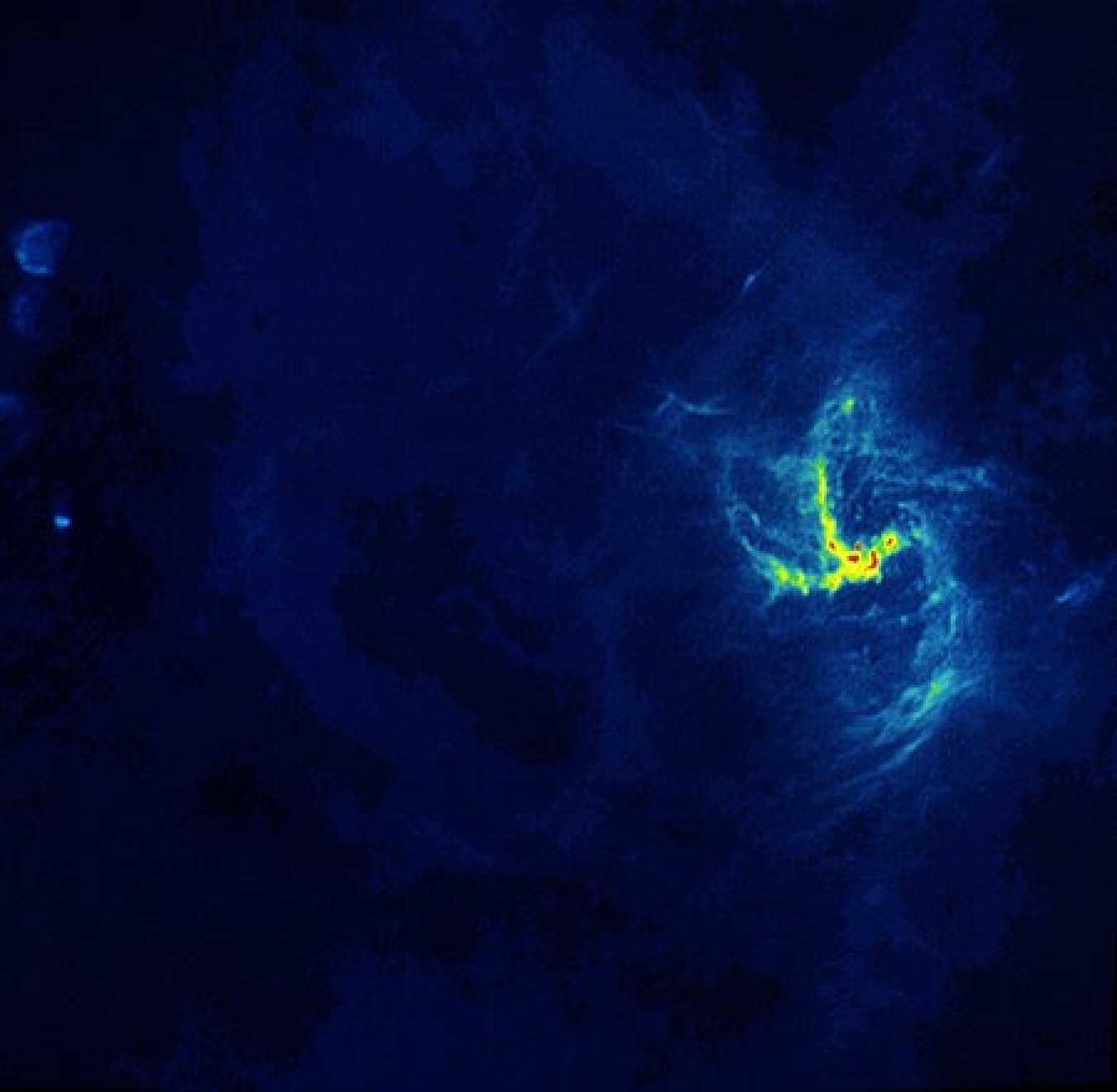The
Bulge
The central bulges of the galaxies, as well as the globular clusters, are systems that in some way resemble the elliptical galaxies being, however, constituent bodies of the spiral galaxies.
Composition
Like the elliptical galaxies, the central bulges and
the globular clusters of the spirals are not provided
with big quantities of gas and young stars. They are mainly
composed by a very dense amount of population II stars, which are old and
possess a weak metallic content (elements heavier than helium). These stars are
responsible for the yellowish look displayed by such bodies.
Form
The bulges of some galaxies assume the form of a bar, as it happens in
the Milky Way. For the higher metallic content observed at the stars located in
the bar itself, it's estimated that this one is younger than other features of
the bulge.
The stars and gases of the bulge draw complex orbits inside the barred
spiral galaxies, opposing to the circular orbits observed at the regular spiral
galaxies. Nevertheless, the bar rotates as a solid structure, collecting
materials that are therefore directed into the centre of the bulge.
The Centre of the Bulge
The collected material is retained in a ring of gases located about 1000
light years from the very centre. The accumulation of the gas at this ring prevents
that it transits directly until the centre, which would provoke a spectacular
light burst at the active core of the Milky Way.
In the centre of the bulge of our galaxy, distributed in a disk that is
about 1000 light years wide and about 200 light years thick, one may observe
powerful radio waves forming interlaced filaments that are distributed along
the magnetic fields. It's estimated that the latter ones are feeded by the
magnetic fields of the material that is absorbed by the bar.
Very powerful and dot-shaped radio sources are frequently observed at
the heart of the bulges. It's thought that they have their origin in giant
black holes and that the production of energy at the various wavelengths
follows a process that is analogue to the one that occurring in the quasars or in the radio-galaxies.
The centre of the Milky Way, located at a distance of 28000 light years
from us in the direction of Sagittarius, is also conjectured to be host to a
giant black hole, with more than 1 million solar
masses. However, comparing to the ones placed in the interior of the active
galaxies, the giant black hole of the Milky Way has smaller dimensions and
fuels less spectacular phenomena.
Close to this amazing mass agglomeration, dust and gas clouds spiral at increasing velocities towards the centre.
Its immediate neighbourhood is thought to harbour an accretion disk.

Sgr A, the radio waves
source at the centre of the Milky Way (K.Y. Lo, University Illinois)
_